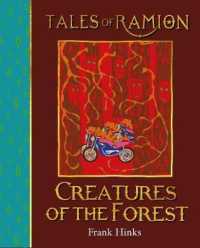Full Description
Since early discoveries of so-called Celtic Art during the 19th century, archaeologists have mused on the origins of this major art tradition, which emerged in Europe around 500 BC. Classical influence has often been cited as the main impetus for this new and distinctive way of decorating, but although Classical and Celtic Art share certain motifs, many of the design principles behind the two styles differ fundamentally. Instead, the idea that Celtic Art shares its essential forms and themes of transformation and animism with Iron Age art from across northern Eurasia has recently gained currency, partly thanks to a move away from the study of motifs in prehistoric art and towards considerations of the contexts in which they appear.
This volume explores Iron Age art at different scales and specifically considers the long-distance connections, mutual influences and shared 'ways of seeing' that link Celtic Art to other art traditions across northern Eurasia. It brings together 13 papers on varied subjects such as animal and human imagery, technologies of production and the design theory behind Iron Age art, balancing pan-Eurasian scale commentary with regional and site scale studies and detailed analyses of individual objects, as well as introductory and summary papers. This multi-scalar approach allows connections to be made across wide geographical areas, whilst maintaining the detail required to carry out sensitive studies of objects.
Contents
List of figures and tables
List of contributors
Introduction: Context, connections and scale Chris Gosden, Helen Chittock, Peter Hommel and Courtney Nimura
1. Art, ambiguity and transformation Chris Gosden
2. Collecting Iron Age art Courtney Nimura, Peter Hommel, Helen Chittock and Chris Gosden
3. Eurasian Iron Age interactions: A perspective on the sources and purposes of La Tène Style ('Celtic') art Peter Wells
4. Fantastic beasts and where to find them: Composite animals in the context of Eurasian Early Iron Age art Rebecca O'Sullivan and Peter Hommel
5. Bodies and objects in Iron Age Europe and beyond: An integrated approach to anthropomorphic imagery Helen Chittock
6. How Celts perceived the world: Early Celtic art and analogical thought Laurent Olivier
7. How can Celtic art styles and motifs act? A case study from Later Iron Age Norfolk Jody Joy
8. Visual memory and perceptions in ancient Celtic art Nathalie Ginoux
9. Celtic art before the Early Style: Some new data from south-west Germany and the Heuneburg Dirk Krausse
10. Sign o'the times: The re-use of pre-Roman Iron Age British and European symbols on Late Iron Age Irish equestrian equipment Rena Maguire
11. 'Damn clever metal bashers': The thoughts and insights of 21st century goldsmiths, silversmiths and jewellers regarding Iron Age gold torus torcs Tess Machling and Roland Williamson
12. Refugees, networks, politics and east-west connections in Early Celtic art: Paul Jacobsthal's 'History of a Monster' in context Sally Crawford and Katharina Ulmschneider
13. The history of a monster Paul Jacobsthal
Discussion: Dialogues with Jacobsthal Tim Champion







